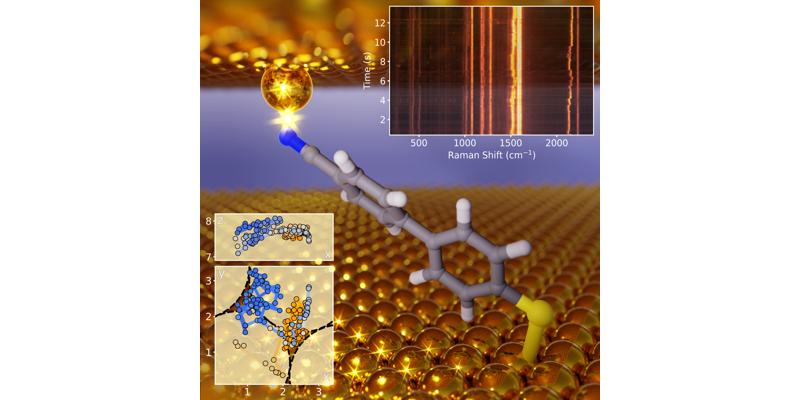- Share
- Share on Facebook
- Share on X
- Share on LinkedIn
Séminaire
On November 21, 2023

Tamas Földes (ILL)
Plasmonic surfaces sculpted to create local environments, are able to amplify the interaction between the VIS/IR light and matter, such as Raman scattering. Recent advances in surface enhanced Raman spectroscopy (SERS) allowed us to extract high-intensity, time-resolved spectra of reservoirs comprised of only a handful of molecules. In these sub nanometer-scale environments, the impact of chemical enhancement can grow comparable to that of the physical enhancement. Hence, we carried out quantum chemical calculations to understand the observed changes in the Raman spectrum of gold(111)-attached cyano-biphenylthiol (BPT-CN) self-assembled monolayer (SAM) [Ref.1]. These investigations revealed that the observed changes in the spectrum, namely the appearance of transient Raman peaks, can be explained by the formation of reactive surface gold adatoms. These “picocavities” form in ambient conditions after mild laser excitation [Ref. 2], and the confined environment only allows slow relaxation. Based on the computed spectra, we were able to map the gold adatom trajectory in the time-resolved experiment.
Due to the high level of amplification in these systems, even low-concentration intermediate components can be detected with Raman spectroscopy. We applied this technique to understand the evolution of photochemically activated radicals [Ref. 3], and the electrochemical catalytic conversion reaction of CO2 [Ref. 4]. In addition to local chemical perturbations, we also recognized changes in the collective behaviour of surface attached biphenyl-dithiol and para-nitrobenzenethiol molecules in SAMs [Ref. 5]. This spectral matching in combination with SERS can open new approaches to structural and chemical analysis.
[1] Griffiths, J., Földes, T., de Nijs, B. et al. Resolving sub-angstrom ambient motion through reconstruction from vibrational spectra. Nat Commun 12, 6759 (2021).
[2] Qianqi Lin et al. Optical suppression of energy barriers in single molecule-metal binding. Sci. Adv. 8, eabp9285 (2022).
[3] Sokołowski, K., Huang, J., Földes, T. et al. Nanoparticle surfactants for kinetically arrested photoactive assemblies to track light-induced electron transfer. Nat. Nanotechnol. 16, 1121. (2021).
[4] Wright, D., Lin, Q., Berta, D. et al. Mechanistic study of an immobilized molecular electrocatalyst by in situ gap-plasmon-assisted spectro-electrochemistry. Nat Catal 4, 157–163 (2021).
[5] Niclas S. Mueller, Rakesh Arul, Lukas A. Jakob, Matthew Oliver Blunt, Tamás Földes, Edina Rosta, and Jeremy J. Baumberg, Nano Letters 2022 22 (17), 7254-7260
Contact: Judith Peters
Date
11:00
Localisation
LIPhy, salle de conférence
- Share
- Share on Facebook
- Share on X
- Share on LinkedIn